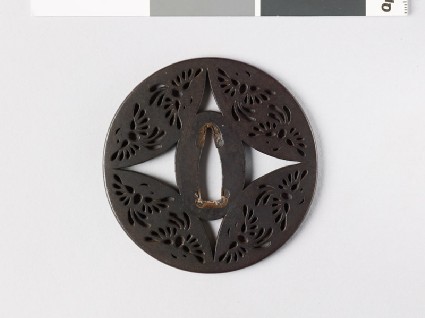Browse: 10610 objects
Round tsuba with flying phoenixes
-
Details
- Date
- 19th century (1801 - 1900)
- Artist/maker
-
Shōami School (active 1601 - 1909) (armourer)Akita-Shōami (possibly active 1601 - 1909) (armourer)manner of Shōami Dennai (1698 - 1778) (armourer)
- Material and technique
- iron, with cut and filed openwork decoration, and polished surface (migaki-ji); tang-hole plugged with soft metal, probably copper
- Dimensions
- 8.2 x 8.2 cm (height x width)
- Material index
-
iron,
- Technique index
-
cut,
- Object type index
- No. of items
- 1
- Credit line
- Bequeathed by Sir Arthur H. Church, 1915.
- Accession no.
- EAX.10272
-
Further reading
Koop, Albert James, The A. H. Church Collection of Japanese Sword-Guards (Tsuba), 3 vols (Oxford, Ashmolean Museum, 1929), no. 272
Glossary
tsuba
Location
-
- currently in research collection
Objects are sometimes moved to a different location. Our object location data is usually updated on a monthly basis. Contact the Jameel Study Centre if you are planning to visit the museum to see a particular object on display, or would like to arrange an appointment to see an object in our reserve collections.
Publications online
© 2013 University of Oxford - Ashmolean Museum


